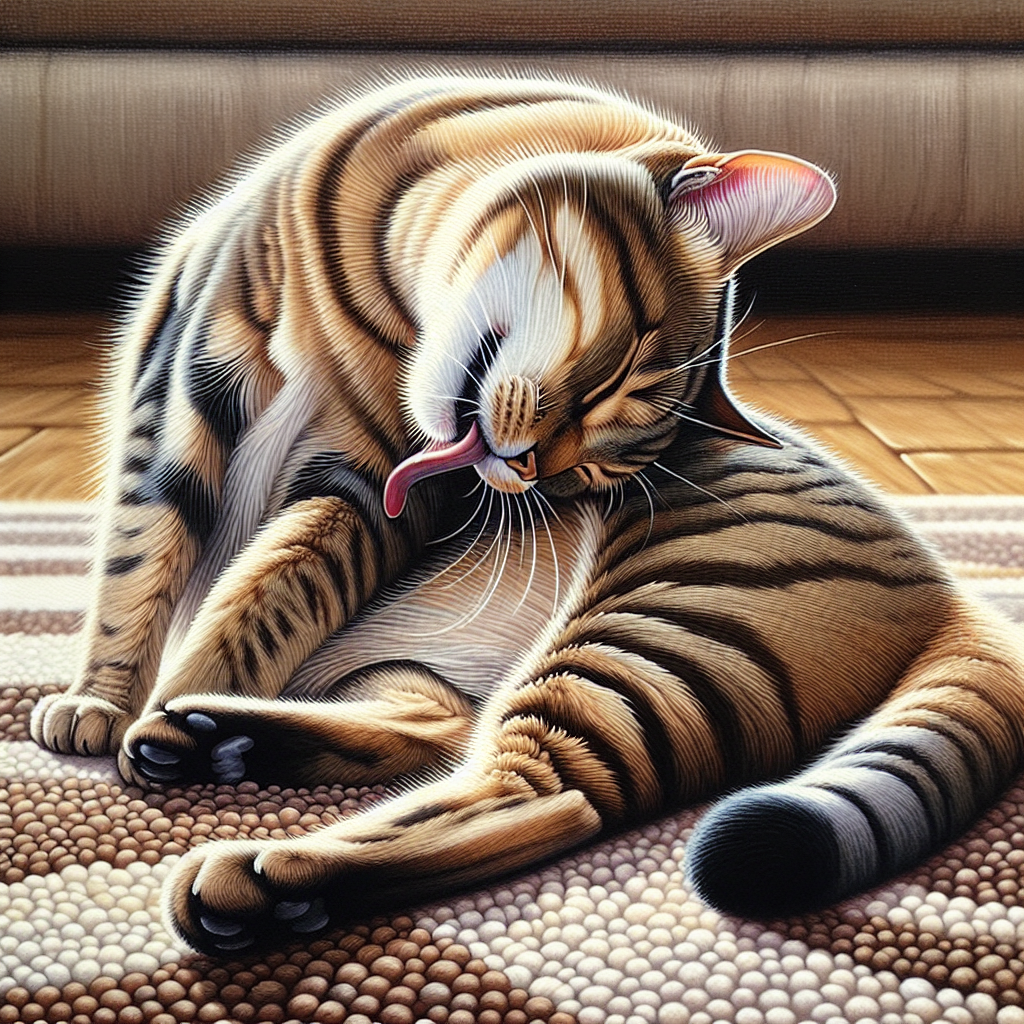Have you ever noticed how tabby cats always seem to be impeccably groomed? It’s not just a coincidence. In fact, tabby cats have a natural inclination to groom themselves more than other cats. Whether it’s their unique fur pattern or their ingrained behavior, tabbies simply can’t resist keeping their coats in tip-top shape. In this article, we will explore the reasons behind why tabby cats groom more than other cats, shedding light on this adorable feline habit.
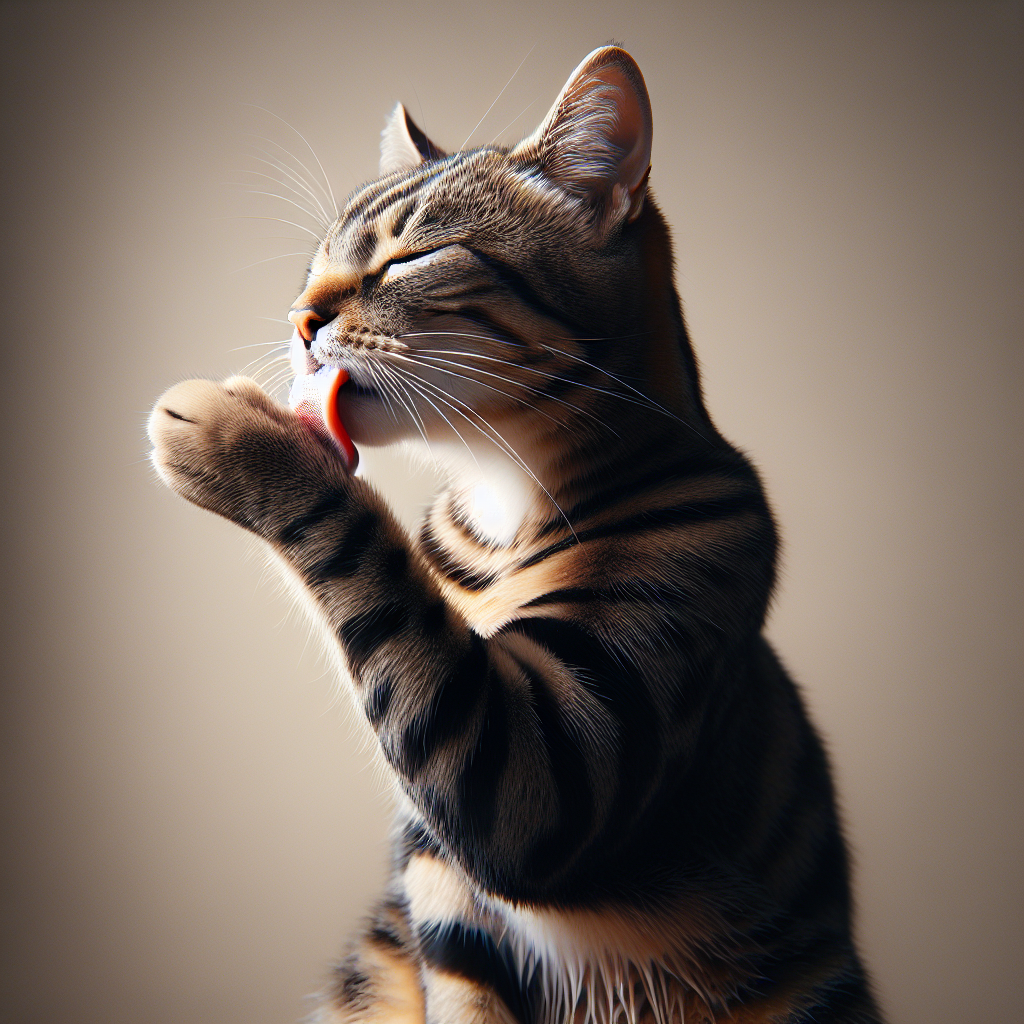
Physical Characteristics
Coat Type
Tabby cats have a unique coat type that sets them apart from other cats. Their coat is typically short and dense, which helps protect them from varying weather conditions. The coat is composed of multiple hair strands that are closely packed together, giving tabby cats their distinct appearance. The individual hairs have a rough texture, allowing them to trap air and provide insulation for the cat’s body.
Coat Length
The length of a tabby cat’s coat can vary depending on the specific breed or genetic background. Some tabby cats may have short coats, while others may have longer coats. The length of the coat not only affects the cat’s appearance but also plays a role in their grooming needs. Longer coats tend to require more maintenance and regular brushing to prevent matting and tangling.
Coat Thickness
Tabby cats often have a thick coat, which can further contribute to their grooming needs. The dense layer of fur provides protection from external elements and helps regulate the cat’s body temperature. However, due to its thickness, the fur can also trap dirt and debris, making regular grooming essential to maintain the cat’s cleanliness and overall well-being.
Grooming Needs
Frequency of Grooming
Tabby cats generally require regular grooming to keep their coat in good condition. Due to their thick and dense fur, they are more prone to matting and tangling, which can lead to discomfort and skin issues if left unattended. It is recommended to brush a tabby cat’s coat at least twice a week to prevent matting and remove loose hair.
Efficiency in Self-Grooming
Tabby cats are known for their remarkable self-grooming abilities. They spend a significant amount of time each day licking themselves to keep their coat clean and free of debris. This self-grooming behavior not only helps maintain the cat’s hygiene but also promotes blood circulation and distributes natural oils throughout the coat, resulting in a healthy and shiny appearance.
Preference for Cleanliness
Tabby cats generally have a strong preference for cleanliness and take great pride in their appearance. They are more likely to engage in grooming activities to ensure that their fur is clean and free from any foreign substances. This preference for cleanliness is deeply ingrained in their natural instincts and can be observed through their meticulous grooming habits.
Health Factors
Skin Sensitivity
Some tabby cats may have more sensitive skin compared to other cat breeds. This heightened sensitivity can make their skin more prone to irritation and allergic reactions. It is important for tabby cat owners to be aware of any signs of skin sensitivity, such as excessive scratching or redness, and take appropriate measures to minimize discomfort and maintain skin health.
Allergies and Irritations
Tabby cats, like any other cat breed, can develop allergies or experience irritations from various environmental factors or certain substances. These allergies can manifest in different ways, including skin rashes, excessive itching, or respiratory issues. Regular grooming and keeping the cat’s living environment clean can help reduce the likelihood of allergic reactions and irritations.
Prone to Skin Conditions
Due to their unique coat characteristics, tabby cats may be more prone to certain skin conditions. The thickness and density of their fur can create an environment conducive to the development of conditions like dermatitis or fungal infections. Regular grooming and proper hygiene practices are essential in preventing these skin conditions and maintaining the overall health of the cat.
Behavioral Traits
Instinctual Behavior
Tabby cats exhibit various instinctual behaviors, including grooming. Grooming is ingrained in their natural instincts as a means of self-care and maintaining their well-being. This instinctual grooming behavior ensures that their coat is clean, free of parasites, and in optimal condition. It is essential to understand and respect these instinctual behaviors when caring for a tabby cat.
Social Grooming
Tabby cats, like many other cat breeds, engage in social grooming behaviors. This behavior involves cats grooming each other as a form of social bonding and establishing their social hierarchy. Social grooming helps build and maintain strong relationships within a cat community. While tabby cats can engage in social grooming with their feline companions, they also require regular individual grooming to maintain their own coat’s cleanliness and health.
Sensory Stimulation
Grooming provides tabby cats with both physical and sensory stimulation. As they groom themselves, each lick and stroke stimulates the nerve endings in their skin. This stimulation not only feels pleasant but also helps relieve stress and anxiety. Regular grooming sessions can become a positive and calming experience for tabby cats, promoting their overall well-being and happiness.
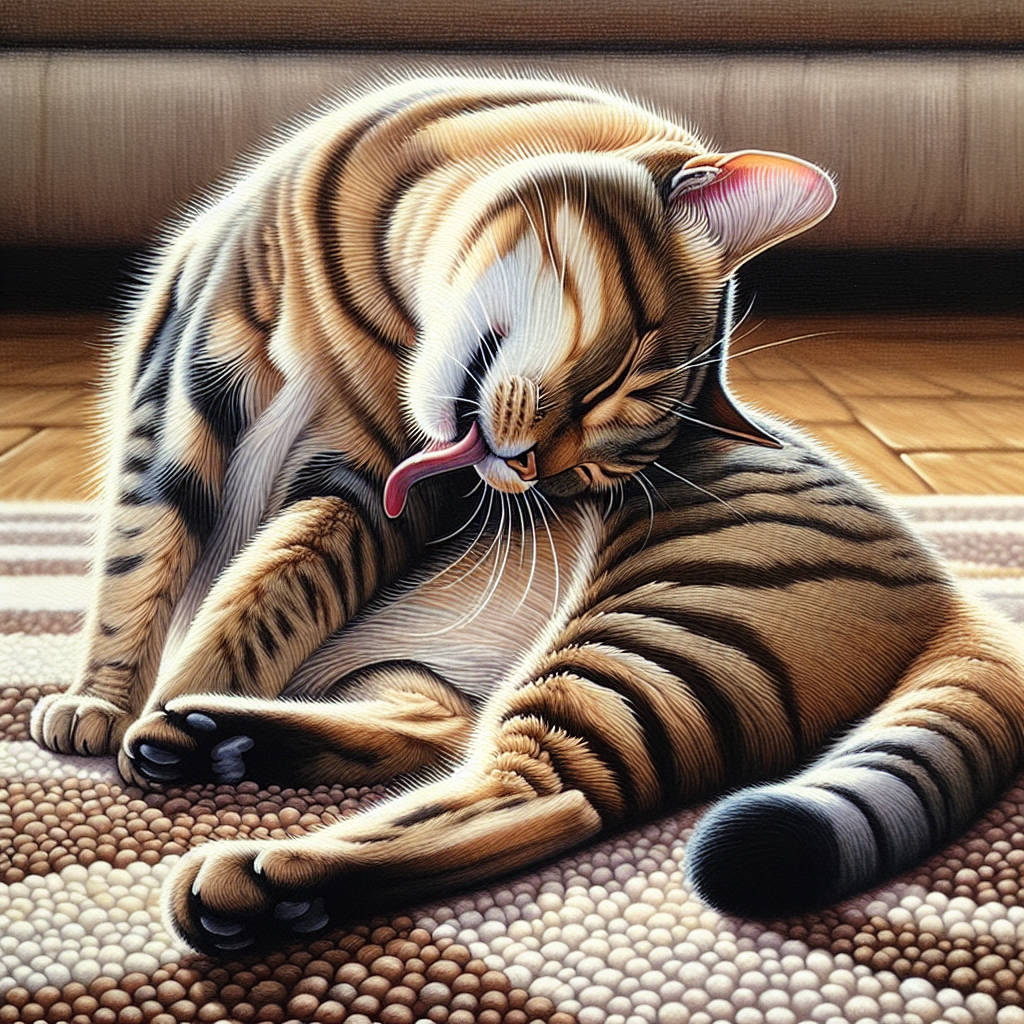
Environmental Factors
Living Conditions
Tabby cats can adapt well to various living conditions, as long as their basic needs are met. Whether they reside in an apartment, a house with a garden, or a rural area, it is important to provide them with a safe and comfortable environment. A clean living space, access to fresh water, and proper nutrition are essential for a tabby cat’s overall health and grooming needs.
Access to Outdoors
The availability of outdoor access can significantly impact a tabby cat’s grooming needs. Cats that are allowed outdoor access may engage in additional grooming to remove dirt and debris accumulated during their outdoor adventures. However, it is essential to ensure that outdoor areas are safe and free from potential hazards to prevent injuries and exposure to harmful elements.
Exposure to Dirt and Pollutants
Tabby cats that have access to outdoor environments may be more exposed to dirt, pollutants, and allergens. This exposure can increase the need for regular grooming to remove any foreign substances from their coat. Indoor tabby cats can also accumulate dust and allergens from the environment, highlighting the importance of maintaining a clean living space to minimize potential health issues.
Genetic Predisposition
Inherited Traits
Tabby cats inherit various physical and behavioral traits from their ancestors, which can influence their grooming needs. These inherited traits can affect coat length, thickness, and even the inclination for self-grooming. Understanding the specific genetic predispositions of a tabby cat can help tailor grooming practices to their individual needs and ensure their overall health and well-being.
Tabby Cat Breeds
While tabby is not a specific breed but a coat pattern, there are certain cat breeds that often exhibit the tabby pattern. These breeds include Maine Coon, British Shorthair, Bengal, and Abyssinian, among others. Each breed may have unique grooming requirements due to variations in coat length, density, and individual genetic factors. Familiarizing yourself with the specific grooming needs of the tabby cat breed you have can help ensure appropriate care.
Evolutionary Background
Tabby cats have a rich evolutionary background dating back thousands of years. Their ancestral origins can be traced to wild cats with similar coat patterns found in different regions of the world. The ancestral need for grooming to maintain a healthy and functional coat has been passed down through generations. Considering the evolutionary background of tabby cats can offer valuable insights into their grooming needs.
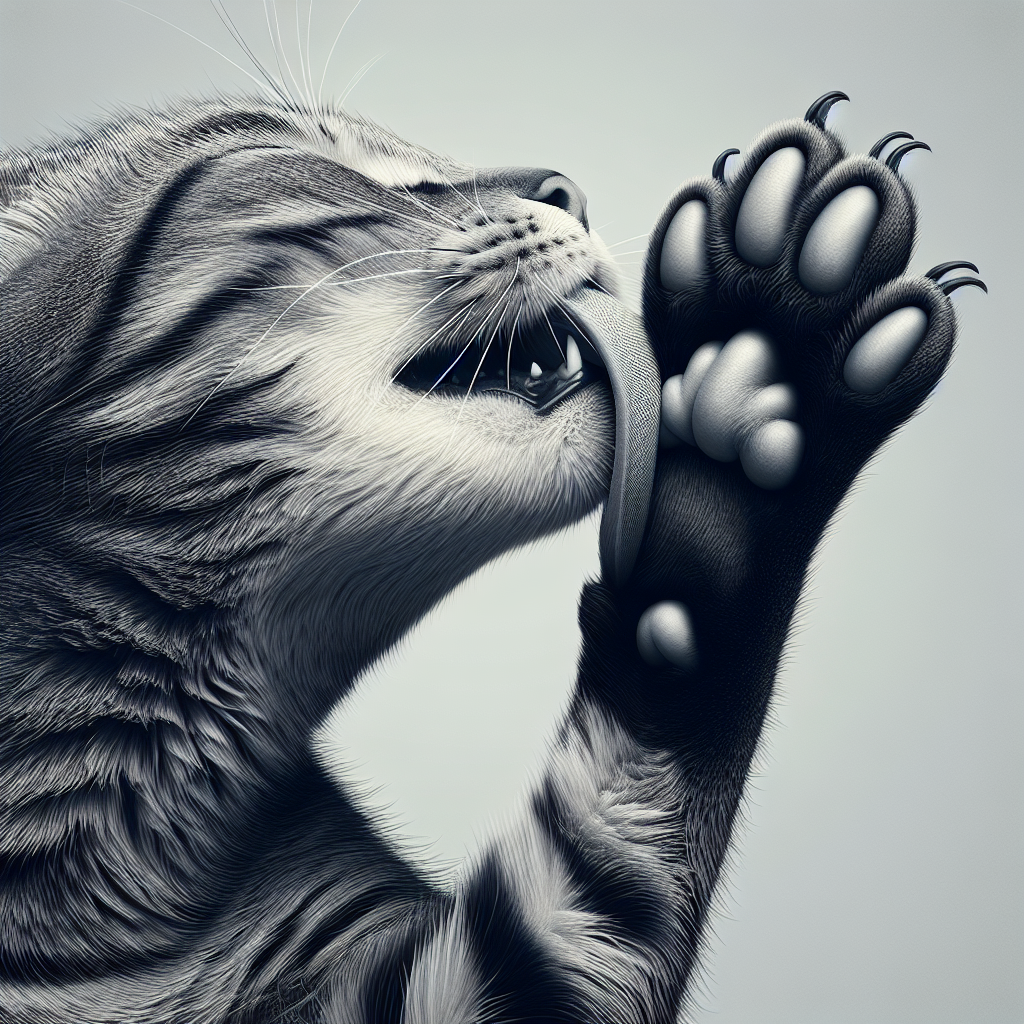
Cultural Influence
Human Interaction
The cultural influence on tabby cats’ grooming habits can be significant, as their interactions with humans play a vital role. Cats that have been raised in environments where grooming is encouraged and positively reinforced are more likely to have a cooperative attitude towards grooming activities. Regular human interaction, companionship, and positive reinforcement can foster a grooming routine that benefits both the cat and their owner.
Grooming Habits Reinforcement
Cultural influences can also extend to the reinforcement of grooming habits in tabby cats. Owners who consistently provide grooming sessions and ensure the cat’s comfort and well-being during the process can create a positive association with grooming. This reinforcement helps establish a routine and promotes cooperation from the cat, making grooming a stress-free and enjoyable experience for both parties involved.
Perceived Aesthetics
Cultural perceptions of aesthetic beauty often influence grooming practices for tabby cats. Some owners may prefer a certain grooming style or specific coat appearance based on cultural standards or personal preferences. It is important to strike a balance between aesthetic considerations and the cat’s comfort and natural grooming needs, ensuring that grooming practices prioritize the cat’s health and well-being above all else.
Comparative Studies
Observations of Different Cat Breeds
Comparative studies involving different cat breeds have provided insights into their grooming habits and needs. These studies help identify commonalities and differences in the grooming behaviors of tabby cats compared to other breeds. Observing and studying these differences can lead to a better understanding of the unique grooming needs and preferences of tabby cats, allowing owners to tailor their grooming practices accordingly.
Grooming Habits Research
Numerous research studies have specifically focused on cat grooming behaviors, shedding light on the reasons behind tabby cats grooming more than other cats. These studies have explored various factors, including genetics, coat characteristics, and environmental influences. By drawing from this research, cat owners can gain a deeper understanding of why tabby cats have heightened grooming needs and how to provide appropriate care.
Scientific Studies on Tabby Cats
Scientific studies dedicated to examining tabby cats’ grooming habits have provided valuable knowledge about their behavior and needs. These studies often involve direct observation and analysis of grooming behaviors, as well as the impact of external factors on the cat’s grooming routine. By referencing the findings of scientific studies, cat owners can gain evidence-based insights into how to effectively groom and care for their tabby cats.
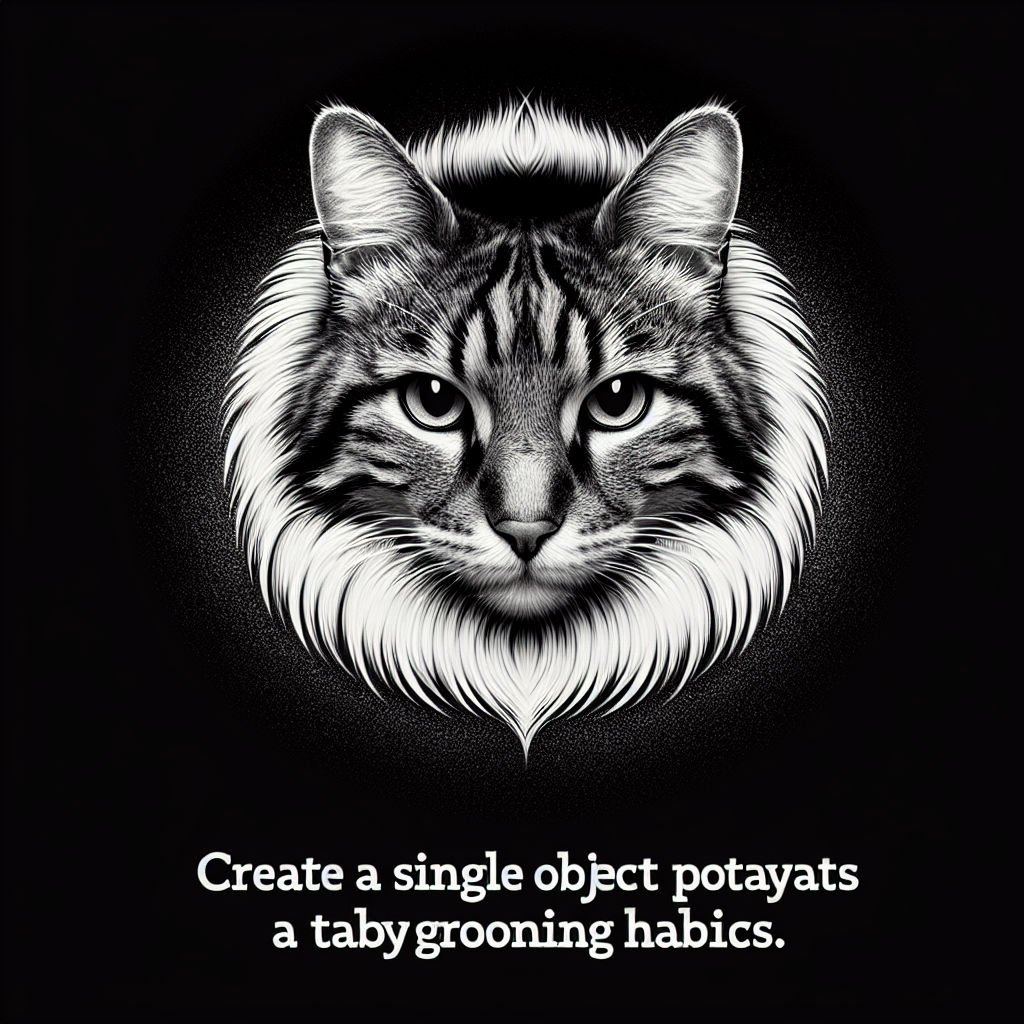
Owner’s Role
Providing Grooming Accessories
As an owner of a tabby cat, it is essential to provide the necessary grooming accessories to facilitate regular grooming sessions. This includes appropriate brushes or combs suitable for the cat’s specific coat type and length. Additionally, providing grooming products such as mild cat shampoos and conditioners can help maintain the cat’s coat cleanliness and overall hygiene.
Encouraging Regular Grooming
Owners play a crucial role in encouraging and maintaining a regular grooming routine for their tabby cats. This involves dedicating time for grooming sessions and providing positive reinforcement to encourage the cat’s cooperation. By establishing a consistent grooming schedule and making it a positive experience, owners can ensure that their tabby cats receive the necessary care for their coat and overall well-being.
Managing Allergies and Skin Conditions
Tabby cats may be more prone to allergies and skin conditions, requiring diligent management from their owners. Regular monitoring of the cat’s skin health, maintaining a clean living environment, and promptly addressing any signs of allergies or irritations are vital responsibilities for owners. Consulting with a veterinarian can provide additional guidance on managing allergies and skin conditions specific to tabby cats.
Tips for Cat Owners
Regular Brushing Routine
Establishing a regular brushing routine is essential for tabby cats to maintain their coat’s health and prevent matting. Choosing an appropriate brush or comb based on the cat’s coat type, length, and density is crucial. Begin by gently brushing the cat’s coat, starting from the head and gradually moving towards the tail. Regular brushing not only helps remove loose hair but also promotes blood circulation and stimulates the cat’s natural oils for a healthier coat.
Understanding Individual Cat Needs
Each tabby cat is unique and may have specific grooming needs based on their coat characteristics, genetic background, and health conditions. It is important for owners to observe and understand their cat’s individual needs, from identifying any skin sensitivities or allergies to recognizing preferences for grooming methods. By tailoring grooming practices to the individual cat, owners can ensure optimal care and well-being.
Consulting Veterinarians for Advice
When in doubt, consulting with a veterinarian is always a wise decision. Veterinarians can provide invaluable advice and guidance specific to a tabby cat’s grooming needs and overall health. They can recommend appropriate grooming products, address any concerns regarding allergies or skin conditions, and provide professional insight to ensure the cat’s well-being. Regular visits to the veterinarian can support a comprehensive and holistic approach to caring for a tabby cat.
In summary, tabby cats have distinct physical characteristics, grooming needs, and behavioral traits that set them apart from other cat breeds. Their coat type, length, and thickness require regular maintenance to prevent matting and keep their fur clean. Tabby cats exhibit a strong preference for cleanliness and engage in self-grooming behaviors to keep their coat and skin healthy. Health factors, behavioral instincts, and environmental influences further contribute to their grooming needs. Understanding the genetic predispositions and cultural influences surrounding tabby cats’ grooming habits can help owners provide the best care and ensure their cats’ well-being. By actively fulfilling their role as owners, providing the necessary grooming accessories, and seeking professional advice when needed, cat owners can maintain a healthy and happy life for their beloved tabby cats.

